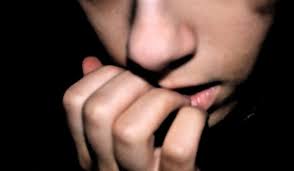 A national survey of anxiety finds a statistically significant increase for the first time since it was launched in 2007.
A national survey of anxiety finds a statistically significant increase for the first time since it was launched in 2007.
by Deena Shanker
If misery loves company, it should be thrilled: Americans left and right are under so much stress it’s now registering on the American Psychological Association’s anxiety meter.
For 10 years, the APA has been running its “Stress in America” survey, usually finding that stress is caused by three primary factors—money, work, and the economy. Those factors clearly play a role in the current national mood. Younger Americans are worried about college debt, older ones about retirement, and everyone, it seems, about the economic prospects of the next generation. In the study, respondents with incomes below $50,000 reported higher stress levels than those with higher incomes.
Still, over the course of the decade, the psychologists found that stress in American life, on the whole, has been gradually decreasing.
Then came the election. The APA’s members were picking up the campaign as a new stressor in their patients. The group added some election-related questions to its annual poll, conducted in August, and released the results in October. The findings: At 52 percent, more than half of Americans, both Democrats and Republicans, were anxious about the vote.
So last month, just before President Donald Trump’s inauguration, the APA conducted an additional poll to check on the nation’s mental health. The picture isn’t pretty.
“The results of the January 2017 poll show a statistically significant increase in stress for the first time since the survey was first conducted in 2007,” the APA said on Wednesday in a report on the survey of 1,019 adults living in the U.S., conducted from Jan. 5 to Jan. 19 by Harris Poll. 1
Americans’ stress levels in January were worse than in August, in the middle of the angriest, most personal campaign in recent memory, when some believed the anxiety would abate after the election. At 57 percent, more than half of respondents said the current political climate was a very or somewhat significant source of stress. Stressors for everyone, including Republicans, were the fast pace of unfolding events and especially the uncertainty of the current political climate, said Vaile Wright, director of research and special projects at the APA.
Many of the demographics break down along predictable lines:

But the stress is broader than race or party alone can describe. A full two-thirds of respondents to the survey said they are stressed out about the nation’s future, and while that includes 76 percent of Democrats, it reflects the feelings of 59 percent of Republicans as well.
“I don’t think it can be just be boiled down to the side that won vs. the side that didn’t,” Wright said. “There is something going on across the aisle.”
As for age, millennials reported more stress than their parents or grandparents. No surprise there—they strongly preferred the Democratic candidate, Hillary Clinton.

Urban dwellers are doing significantly worse than their suburban and rural counterparts. That makes sense, Wright noted, given the strong support President Trump enjoyed as a candidate outside big cities.

Education matters, too, and maybe not the way you would imagine: 53 percent of those with more than a high school education report the election outcome as a very or somewhat significant source of stress, compared with 38 percent of those with just high school or less. While this again correlates with voter preferences, it’s also somewhat surprising, because higher education levels generally translate into more job opportunities.
The report also notes the rise of personal safety as a concern among its respondents, 34 percent of whom are worried about it, the highest level since 2008, when it was 31 percent. In 2014, stress over personal safety had dipped to its lowest level, 23 percent. More than half the country is worried about terrorism: some 59 percent, up from the August poll’s finding of 51 percent and significantly higher than the 10-year average of 34 percent. And nearly half the respondents reported stress related to police violence against minorities—44 percent, up from August’s 36 percent—with the breakdown along racial lines.

These worries aren’t necessarily tied to what’s actually unfolding on the ground. Violent crime, for example, was up in 2015 from 2014 but down from 2011, when fewer people were worried about it.
Stress, however, is not always about reality.
“Whether we’re actually in more danger or we just believe we could be doesn’t matter,” Wright said. “Perception drives behavior.”
BOOMBERG
Leave a Reply
You must be logged in to post a comment.